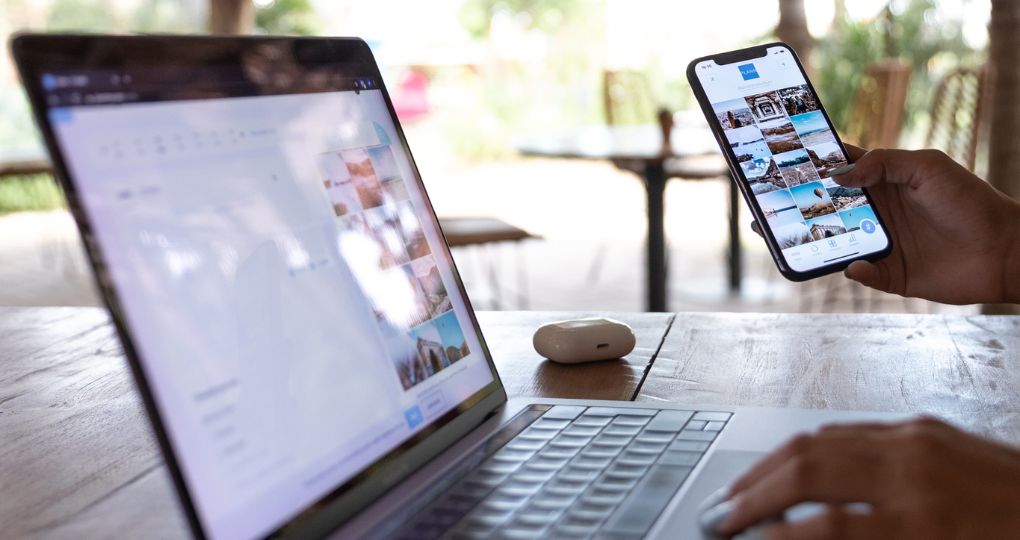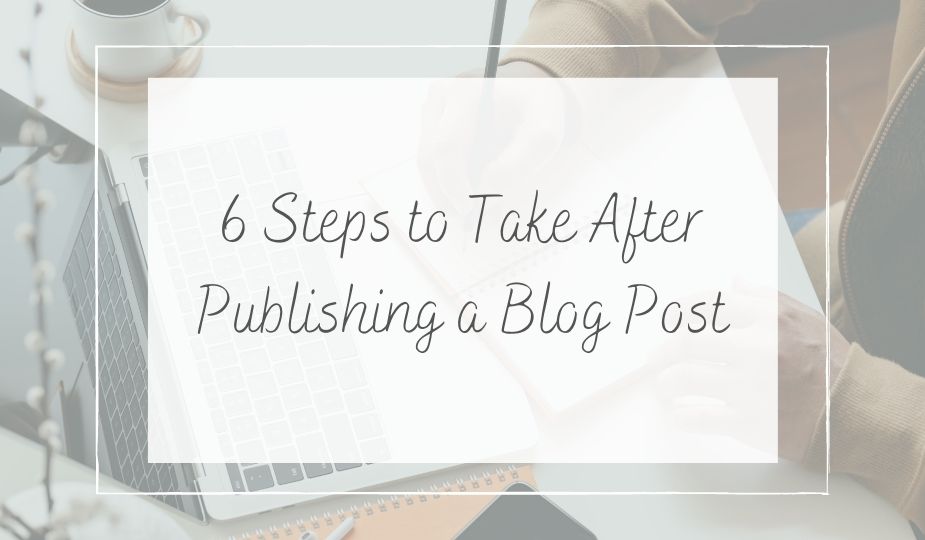Launched your blog and wondering what other important pages you need? Besides your awesome posts, essential pages provide key info about your blog without cluttering it up.
Think of your blog as a house: posts are the ever-changing decorations and stories you share, while pages are the foundation – the essential info visitors always need.
Posts are where your articles and fresh content live. Pages, on the other hand, house timeless information about your blog, like “About Me” or “Contact.” This separation keeps things organized for your readers, making it easier for them to find what they’re looking for.
Let’s dive into the most important pages every blog should have!

Important Pages Every Blog Should Have
Essential Pages
Start Here Page (optional)
A Start Here page, also sometimes called “welcome,” “getting started,” or “[Your Blog Name] 101,” is a special page on a blog designed specifically for new visitors.
Think of it as a roadmap or a friendly concierge for your blog. It acts as a central hub that introduces new readers to your blog’s purpose, explains who you are (or your team is), and helps them find the content they’re most interested in.
Here are some key things a Start Here page might include:
- A warm welcome and introduction: Set a friendly tone and give new visitors a sense of what your blog is all about.
- About you or your team: Briefly introduce yourself (or yourselves) and your area of expertise.
- Most popular content: Showcase your best or most-read blog posts to give new visitors a jumping-off point for exploring your content.
- Categories or tags: If your blog uses categories or tags to organize content, highlight the most relevant ones for new visitors.
- Call to action: Encourage new visitors to subscribe to your blog, follow you on social media, or download a freebie.
Overall, a Start Here page aims to give new visitors a positive first impression and make it easy for them to navigate your blog and find the content they’re looking for. It’s not one of the most important pages every blog should have, but it can be a valuable tool for improving user experience and building a loyal readership.
About Me Page
An About Me page on a blog is like your virtual handshake – it’s a chance to introduce yourself (or your team) to your readers and build a connection with them. It goes beyond just listing your name and interests; it’s a space to tell your story and explain why you started the blog and what you’re passionate about.
Here’s why an About Me page is important for your blog:
- Establishes trust and credibility: People connect with people. By sharing your story and background, you show your readers there’s a real person behind the blog, making your content more relatable and trustworthy.
- Helps readers connect with you: An About Me page allows you to share your personality, voice, and values. This can help readers feel like they know you and make them more likely to return for your content.
- Shows your expertise: Briefly explain your background and why you’re qualified to write about your chosen topic. This establishes your authority in the field and positions you as a valuable resource for your readers.
- Highlights your blog’s purpose: Explain what inspired you to start your blog and what you hope to achieve with it. This clarifies your blog’s focus and helps readers understand if your content aligns with their interests.
- Increases engagement: A well-written About Me page can encourage readers to subscribe to your blog, follow you on social media, or leave comments. It opens a door for further communication and a sense of community.
While it’s not mandatory, a strong About Me page can be a powerful tool for building a successful blog. It allows you to connect with your audience on a deeper level and create a loyal following.
Contact Page
A blog’s Contact Page is a digital bridge between you and your readers. It provides them with various ways to get in touch and offers several benefits for your blog’s success. Here’s a breakdown of why a contact page is one of the most important pages every blog should have:
Provides Accessibility:
The primary function of a Contact Page is to make it easy for readers to reach out. This could be for different reasons, such as:
- Asking questions or seeking clarification on your blog posts.
- Offering feedback or suggestions for future content.
- Inquiring about collaborations or guest posting opportunities.
- To share their own stories or experiences relevant to your blog’s niche.
By offering a dedicated contact channel, you demonstrate openness to communication and encourage reader engagement. Here are some reasons a Contact Page is beneficial:
- Increases Credibility: A professional-looking Contact Page with clear information adds a layer of legitimacy to your blog. It shows you’re serious about building a community and value your readers’ input. This can be particularly important if you’re trying to establish yourself as an authority in your field.
- Provides Business Opportunities: The Contact Page can also be a gateway for potential business opportunities. Businesses or brands related to your niche might reach out through the contact form for collaborations, sponsored content, or advertising inquiries.
- Helps With Customer Service: Even for blogs that don’t directly sell products, a Contact Page allows you to address reader concerns or troubleshoot any technical issues they might face while navigating your blog. This fosters a sense of trust and builds a positive brand image.
Different Ways to Connect:
Modern Contact Pages typically offer multiple ways for readers to reach you, such as:
- Contact form: This is the most common option, allowing readers to submit messages directly through your website.
- Email address: Providing your email address gives readers a more personal way to connect, but be mindful of potential spam.
- Social media links: Including links to your social media profiles allows readers to connect with you on those platforms and interact with your content there, too.
Privacy Page
A blog’s Privacy Page is a legal document that outlines how you collect, use, and store information from your readers. It’s one of the most important pages every blog should have for two main reasons:
1. Transparency and Building Trust:
- Informs Readers: Your Privacy Page clearly explains what information you gather from visitors (emails, cookies, etc.) and how you utilize it. This transparency builds trust with your readers, letting them know you respect their privacy.
- Sets Expectations: The page outlines how you handle reader data, such as for newsletter subscriptions or comments. This sets clear expectations for your audience and avoids any potential confusion.
2. Legal Compliance:
- Data Protection Laws: Many countries and regions have data privacy laws like GDPR (General Data Protection Regulation) or CCPA (California Consumer Privacy Act). A Privacy Page ensures you comply with these regulations and avoid legal repercussions.
- Protects You and Your Readers: A privacy policy safeguards you from potential lawsuits or fines related to data privacy violations. It also protects your readers by ensuring their information is handled responsibly.
Here’s a breakdown of some key elements typically found in a blog Privacy Policy:
- Types of information collected: This details what data you gather from readers, like email addresses, browsing activity, or comments.
- How information is used: This explains how you utilize the collected data, such as for newsletters, personalization, or analytics.
- Cookie policy: If your blog uses cookies to track user behavior, this section explains what cookies are and how they’re used.
- Data sharing practices: This clarifies if you share any reader information with third parties and under what circumstances.
- Data security measures: Outline the steps you take to protect reader data from unauthorized access or breaches.
- Your readers’ rights: Depending on the data protection laws you comply with, you might need to explain user rights regarding their data, such as access, correction, or deletion.
Important Note: While there are free Privacy Policy templates available online, it’s recommended to consult with a lawyer to ensure your policy adheres to specific data protection laws and your blog’s unique data collection practices.
Disclosure Page
A Disclosure Page on a blog is a transparent statement that informs your readers about any potential conflicts of interest you might have when recommending products, services, or brands. A Disclosure Page is one of the most important pages every blog should have, especially if you plan to monetize your blog. Here’s why it’s important:
Builds Trust and Avoids Deception:
- Reader Transparency: A DisclosurePpage lets your readers know upfront if you’re financially benefiting from promoting something on your blog. This transparency builds trust and avoids any misunderstandings about your recommendations.
- Ethical Blogging: It showcases your commitment to honest and ethical blogging practices. Readers appreciate knowing they’re getting genuine recommendations, not just disguised advertisements.
Legal Compliance:
- FTC Regulations: The Federal Trade Commission (FTC) in the US has guidelines requiring bloggers to disclose any material connections with brands or products they endorse. A Disclosure Page helps you comply with these regulations and avoid legal trouble.
Types of Disclosures Needed:
There are various situations where a disclosure might be necessary:
- Affiliate Links: If you use affiliate links, which means you earn a commission if someone purchases something through your link, you need to disclose this clearly.
- Sponsored Posts: If you’re paid to write a post about a particular product or service, you need to disclose that it’s sponsored content.
- Free Products: If you receive free products in exchange for a review, you should disclose that you received them for free.
How to Write a Disclosure:
- Clear and Concise: Keep your disclosure language clear, easy to understand, and readily visible to readers.
- Specific About Relationships: Clearly state the nature of your connection with the brand or product being mentioned (affiliate, sponsored post, free product).
- Placement: Disclosures are typically placed at the beginning or end of a relevant blog post, but some bloggers also include a general disclosure statement on their dedicated disclosure page.

Additional Valuable Pages
Resources Page
A Resource Page on a blog is a collection of helpful links and information relevant to your blog’s niche. It acts as a one-stop shop for readers to find valuable tools, articles, websites, books, or other resources that can help them understand your topic or help them achieve their goals related to it.
Here’s what a Resource Page typically includes:
Content:
- Helpful Links: A Resource Page is a well-organized list of links to external resources. These can be other blogs, articles, websites, tools, apps, books, ebooks, online courses, or anything you deem valuable for your readers.
- Categorization: To make the information easy to read, categorize your resources with clear headings or use tabs to separate them by topic or type (e.g., “Free Tools,” “Helpful Articles,” “Recommended Books”).
- Brief Descriptions: For each link, include a short description that explains what the resource is about and why it’s valuable to your readers.
Benefits of a Resource Page:
- Provides Value to Readers: A well-crafted Resource Page positions you as an authority in your niche by demonstrating your knowledge of the best resources available. It saves your readers time and effort searching for relevant information.
- Boosts Engagement: By offering valuable resources, you encourage readers to spend more time on your blog and keep coming back for future recommendations.
- Increases Credibility: Highlighting high-quality resources from other credible sources strengthens your own blog’s credibility and establishes trust with your audience.
Examples of Resources on a Resource Page:
The specific resources you include will depend on your blog’s niche, but here are some general examples:
- For a food blog: Links to recipe websites, kitchen tool reviews, online cooking courses, meal planning apps, and healthy eating guides.
- For a photography blog: Links to tutorial websites, recommended photo editing software, online photography courses, camera gear reviews, and photography inspiration websites.
- For a travel blog: Links to travel booking platforms, travel apps, packing guides, destination guides, and travel blogs from other adventurers.
- For a business blog: Links to productivity tools, project management software, marketing resources, business templates, and industry news websites.
Additional Tips:
- Keep it Updated: Regularly review and update your Resource Page to ensure the links are still active and the information remains relevant.
- Visually Appealing: Use clear formatting and consider using visuals like icons or images to make the page user-friendly and visually appealing.
- Monetization Option: If you have affiliate relationships with some of the resources, you can disclose this and potentially earn a commission if readers purchase through your links.
FAQ Page
A blog’s FAQ (Frequently Asked Questions) Page is a dedicated section on your blog that addresses the most common questions your readers have. Here’s a breakdown of what it includes and why it’s an important page every blog should have:
Content of a FAQ Page:
- List of Questions & Answers: A FAQ Page is a clear and concise list of questions you frequently receive from readers, along with well-written answers that provide all the necessary information.
- Organization: Organize the questions logically by topic or category for easier navigation. You can also use a search bar if your FAQ page is extensive. A drop-down menu is another great option.
Benefits of an FAQ Page:
- Improved User Experience: A FAQ Page anticipates readers’ questions and provides answers in a readily accessible format. This saves them time searching through your blog posts or contacting you directly.
- Reduced Support Load: By addressing common questions upfront, a FAQ Page can significantly reduce repetitive questions, freeing up your time to focus on other aspects of your blog.
- Boosted SEO (Search Engine Optimization): Including relevant keywords in your FAQ questions and answers can improve your blog’s search ranking for those specific queries.
- Enhanced Credibility: A well-maintained FAQ Page demonstrates that you care about your readers’ understanding and that you’re proactive in addressing their needs.
Examples of FAQ Questions on a Blog:
The specific questions on your FAQ Page will depend on your blog’s niche, but here are some general examples:
- For a food blog:
- What are your favorite kitchen tools?
- Do you have any dietary restrictions?
- How can I substitute ingredients in your recipes?
- For a photography blog:
- What camera do you use?
- How do you edit your photos?
- What are your best tips for taking travel photos?
- For a travel blog:
- How do you plan your trips?
- What are your favorite travel destinations?
- Do you need a visa to travel there?
Tips for Creating a Great FAQ Page:
- Identify Common Questions: Monitor your blog comments, emails, and social media interactions to identify questions that pop up frequently.
- Keep it Updated: Regularly review your FAQ Page and add new questions as they arise or remove outdated information.
- Clear and Concise Answers: Provide clear, informative answers that are easy to understand and address the question directly.
- Consider Visuals: For complex answers, consider using screenshots, images, or infographics to enhance understanding.
Subscribe Page
A blog’s Subscribe Page (sometimes called a signup page or newsletter page) isn’t a standard webpage most blogs have. It’s a more targeted landing page specifically designed to convert visitors into email subscribers.
Here are the key elements of a good Subscribe Page:
- Compelling Headline: A clear and concise headline that grabs attention and explains the benefit of subscribing (e.g., “Get Free Weekly Blog Tips!”).
- Clear Opt-in Form: A simple and easy-to-use form where visitors can enter their email address.
- Enticing Incentive: An offer that motivates visitors to subscribe, such as a free ebook, exclusive content, discounts, or early access to new posts.
- Benefits of Subscribing: Highlight the advantages of subscribing, like receiving regular updates, bonus content, or access to a community.
- Social Proof (Optional): Showcase testimonials from existing subscribers or social media follower counts to build trust and credibility.
- Clear Call to Action (CTA): A button that stands out encourages visitors to subscribe (e.g., “Subscribe Now!”).
Why Subscribe Pages Can Be Valuable:
While not one of the most important blog pages every blog should have, Subscribe Pages offer several benefits:
- Grow Your Email List: This allows you to connect with your readers directly through email, building a relationship and increasing engagement.
- Targeted Marketing: With an email list, you can send targeted newsletters promoting your new blog posts, special offers, or products.
- Increased Traffic: Emails can drive readers back to your blog, leading to more website visits and potentially higher engagement.

Optional Pages (Depending on Your Blogging Goals)
Write for Us
A Write for Us page on a blog is basically an open invitation for guest contributors to submit their work for potential publication on your blog. It outlines your blog’s guest posting guidelines and explains the benefits of contributing content.
Here’s a breakdown of what a Write for Us page typically includes:
- Who You Are Looking For:
- Briefly describe your target audience and the types of content that resonate with them.
- Mention the kind of guest writers you’re interested in – established experts, up-and-coming voices, or a mix of both.
- Guest Posting Guidelines:
- Clearly outline your editorial process for guest posts, including topic suggestions, submission format, word count expectations, and turnaround times.
- Mention any specific style guides or formatting requirements you have.
- Benefits for Guest Writers:
- Explain the advantages of writing for your blog, such as:
- Increased exposure to a wider audience relevant to their niche.
- Potential to establish themselves as thought leaders in their field.
- A link back to their website or blog (valuable for SEO).
- The opportunity to build brand awareness and credibility.
- Explain the advantages of writing for your blog, such as:
- Submission Process:
- Provide clear instructions on how writers should submit their guest post ideas or drafts.
- You can include an email address or a link to a submission form.
- Optional Elements:
- Testimonials: Showcase positive feedback from past guest contributors to entice new writers.
- Guest Post Examples: Include links to some of your best guest posts to give potential contributors a sense of the quality and style you expect.
Why a Write for Us Page is Valuable:
A well-organized Write for Us page can bring several benefits to your blog:
- Fresh Content: Attracts guest writers who can offer new perspectives and expertise, enriching your blog’s content and keeping things interesting for your readers.
- Improved SEO: Guest posts often come with backlinks to your blog, which can improve your search engine ranking and drive more organic traffic.
- Content Creation Support: Guest contributions can lighten your content creation workload, allowing you to focus on other aspects of your blog.
- Community Building: Guest posting fosters connections with other bloggers in your niche, potentially leading to collaborations or cross-promotion opportunities.
Important Note: While having a Write for Us page can be beneficial, be prepared to manage the numerous amounts of guest post submissions. It’s important to have a clear selection process to ensure the quality and relevance of the content you publish.
Portfolio
In some cases, your entire blog can function as a portfolio, especially if your niche is content creation itself. For example, a writer might use their blog to showcase:
- Writing Skills: Different blog posts demonstrate their ability to write in various styles and on diverse topics.
- Expertise: The blog content focuses on a specific field, establishing them as a knowledgeable source.
- Client Testimonials (Through Comments): Positive reader comments can act as a form of social proof for potential clients.
Many bloggers, especially freelancers or those in creative fields like design, photography, or web development, include a dedicated Portfolio Page within their blog.

Here’s what a Portfolio Page on a blog usually includes:
- Function: It shows your best work, achievements, or projects relevant to your niche.
- Content:
- Project Samples: Include appealing visuals like images, videos, or short descriptions of your best work.
- Client Logos (Optional): If you’ve worked with any known brands or clients, displaying their logos can add credibility.
- Brief Descriptions: For each project, provide a clear explanation of your role, the project’s goals, and the results achieved.
- Case Studies (Optional): For more complex projects, consider including detailed case studies showcasing your process and impact.
- Call to Action: Encourage visitors to contact you for further information or potential collaborations.
Benefits of a Portfolio Page on a Blog:
- Attract Clients: A well-written Portfolio Page serves as a powerful marketing tool, attracting potential clients who can see your skills and experience firsthand.
- Credibility and Expertise: Showing off your best work strengthens your credibility and positions you as an expert in your niche.
- Easy Access for Potential Clients: Having your portfolio readily available on your blog saves them time searching for your work elsewhere.
Freebies
A Freebies Page on a blog is a dedicated section that offers downloadable resources or other benefits to readers in exchange for something, typically their email address. It’s a strategic tool used for lead generation and building an email list.
Here’s a breakdown of what a Freebies Page usually includes:
Content on a Freebies Page:
- Compelling Headline: A clear and concise headline that grabs attention and highlights the value proposition of the freebie (e.g., “Download Your Free Blog Page Checklist!”).
- Description of the Freebie: A detailed explanation of what the freebie is, what it includes, and how it will benefit readers.
- High-Quality Preview (Optional): For visual freebies like ebooks or templates, include a screenshot or image preview to entice users.
- Clear Opt-in Form: A simple and user-friendly form where visitors can enter their email address to access the freebie.
- Limited-Time Offers (Optional): Creating a sense of urgency with a limited-time offer (e.g., “Download this free guide before [date]!”) can increase sign-ups.
Types of Freebies Offered:
The specific type of freebie you offer will depend on your blog’s niche and target audience. Here are some popular examples:
- Ebooks: Short, downloadable ebooks on relevant topics can provide valuable information to your readers.
- Checklists or Cheat Sheets: Offer condensed and actionable guides on specific tasks or processes related to your niche.
- Templates: Provide pre-formatted templates for documents, worksheets, or social media graphics that save your readers time.
- Stock Photos or Icons (For Creative Fields): Offer free, high-quality stock photos or icons relevant to your niche.
- Webinars or Online Courses (First Module/Preview): Give readers a taste of a premium course you offer by providing the first module or limited-time access for free.
Benefits of a Freebies Page:
- Grow Your Email List: Freebies encourage visitors to subscribe to your email list, allowing you to connect with them directly and build a loyal following.
- Targeted Audience Building: Freebies tailored to your niche attract the right kind of readers who are genuinely interested in your content.
- Increased Engagement: By offering valuable free resources, you keep readers engaged and coming back for more.
- Lead Generation: Email addresses collected through freebie downloads become valuable leads you can nurture with future content and potentially convert into paying customers (if you offer paid products or services).
Important Note:
- Deliver What You Promise: Ensure the freebie delivers the value you advertised to avoid disappointing readers and damaging your credibility.
- Data Protection: Clearly communicate how you’ll use the email addresses collected through your freebie opt-in form. Comply with relevant data protection regulations.
Shop
A Shop Page on a blog site allows bloggers to sell products directly to their readers, transforming their blog into a mini e-commerce store. There are two main ways bloggers can set up a Shop Page:
- Selling their own physical or digital products: Anything from handmade crafts, artwork, or clothing (physical products) to ebooks, printables, or online courses (digital products).
- Affiliate marketing: Partnering with other companies to promote their products and earn a commission on each sale generated through your blog.
Here’s a breakdown of the key elements of a Shop Page on a blog:
- Content of a Shop Page:
- Product Listings: Each product should have a clear image, a descriptive title, and a detailed explanation of its features and benefits.
- Pricing and Variations (Optional): Clearly display the price of each product, and if applicable, offer variations such as size, color, or format (e.g., ebook download vs. physical copy).
- Clear Calls to Action: Buttons like “Add to Cart” or “Buy Now” that are prominent and easy to find.
- Payment Gateway: A secure system for readers to purchase your products using trusted payment methods like credit cards or PayPal.
- Shipping Information (Physical Products): Outline your shipping costs, estimated delivery times, and return policy (if applicable).
- Trust Signals: Include customer reviews, testimonials, or security badges (e.g., SSL certificate) to build trust and encourage purchases.
- Platforms for Creating a Shop Page:
- WooCommerce (for WordPress): A popular and free plugin specifically designed for creating online stores on WordPress websites.
- Shopify: A subscription-based e-commerce platform that offers a user-friendly interface for creating and managing online stores.
- Etsy (for Handmade Goods): An online marketplace specifically for handmade or vintage goods where bloggers can sell their crafts directly.
Benefits of Having a Shop Page:
- Monetization: Sell your own products and generate revenue directly from your blog.
- Increased Reader Engagement: Offer valuable products that complement your blog content and keep readers engaged.
- Build Brand Loyalty: Selling unique products can strengthen your brand identity and create a loyal customer base.
- Data Collection (For Affiliate Marketing): Track affiliate sales and gain insights into your audience’s preferences.
Important Considerations:
- Target Audience: Provide products that are relevant to your blog’s niche and target audience.
- Product Quality: Maintain high-quality standards for your products or the products you promote to uphold your reputation.
- Customer Service: Be prepared to handle customer questions and complaints, order fulfillment, and potential returns efficiently.
Conclusion
Having a well-structured blog goes beyond just creating great content. Essential pages like an “About Me” section and a contact form establish professionalism and build trust and connection with your readers.
This post covered the most important pages every blog should have as well as optional pages to consider for your blog:
- Essential Pages:
- About Me: Introduce yourself, your expertise, and your blog’s purpose.
- Contact: Provide ways for readers to reach out with questions or suggestions.
- Privacy Policy: Outline how you collect and handle reader data.
- Disclosure: Be transparent about potential conflicts of interest with products or brands you recommend.
- Valuable Pages:
- Start Here (Optional): A roadmap for new visitors, best for complex blogs.
- Resources: A collection of helpful links and information relevant to your niche.
- FAQ: Address common questions your readers might have.
- Subscribe: Encourage readers to sign up for your email list for regular updates and exclusive content.
- Optional Pages (Depending on Your Goals):
- Write for Us: Attract guest contributors to share their expertise and broaden your content.
- Portfolio: Showcase your skills and experience, especially if your niche is content creation itself.
- Freebies: Offer downloadable resources or other benefits in exchange for email addresses to build your list.
- Shop: Sell your own products or promote others through affiliate marketing (if applicable).
Remember, the best approach depends on your unique blogging goals. Start with the most important pages every blog should have to establish a strong foundation, then explore valuable and optional pages to enhance your blog’s functionality and connect with your audience on a deeper level. By providing a user-friendly experience and valuable content, you’ll be well on your way to building a successful blog.





